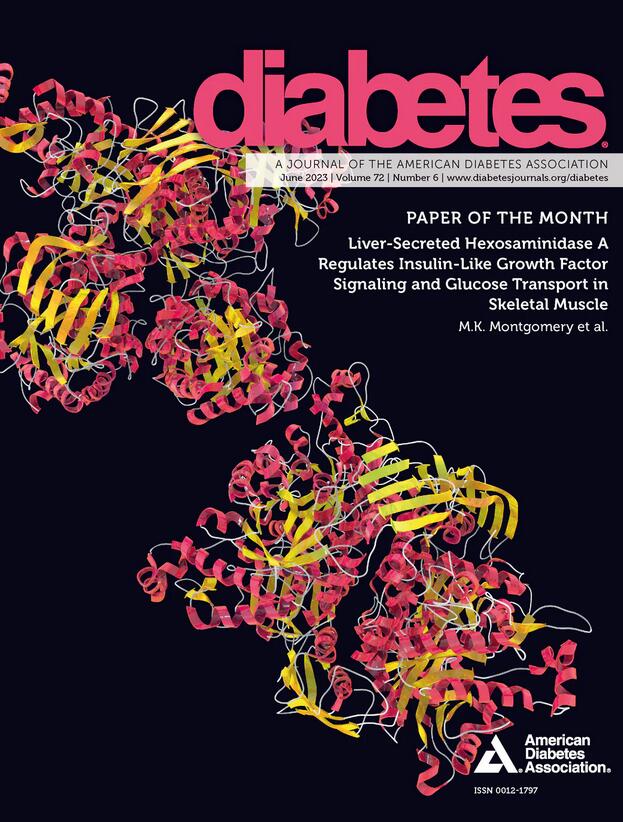探索糖尿病神经病变坐骨神经损伤的结构和分子特征:揭示致病途径和靶点
IF 6.2
1区 医学
Q1 ENDOCRINOLOGY & METABOLISM
引用次数: 0
摘要
糖尿病神经病变(DN)患者坐骨神经中的病变筋膜(LF)与临床症状的严重程度相关。本研究旨在描述这些病变的结构和分子组成,以更好地了解糖尿病神经病变的发病机制。研究人员使用体外磁共振神经成像技术、体外成像技术和蛋白质组分析方法,对患有和未患有 2 型糖尿病(T2D)的截肢者的坐骨神经进行了检查。研究发现,只有在 2 型糖尿病供体中才会发现病变,而且病变表现出明显的结构异常,包括轴突变性、脱髓鞘和血神经屏障(BNB)受损。T2D供体中未发生病变的神经束显示出神经保护途径的激活,而发生病变的神经束则没有这种反应,而是通过经典途径显示出补体激活的增加。肝源性急性期蛋白的检测表明,BNB 的破坏促进了肝脏和神经之间有害的器官间通信。这些发现揭示了导致 DN 的关键分子机制,并突出了治疗干预的潜在目标。本文章由计算机程序翻译,如有差异,请以英文原文为准。
Exploring Structural and Molecular Features of Sciatic Nerve Lesions in Diabetic Neuropathy: Unveiling Pathogenic Pathways and Targets
Lesioned fascicles (LF) in the sciatic nerves of individuals with diabetic neuropathy (DN) correlate with clinical symptom severity. This study aimed to characterize the structural and molecular composition of these lesions to better understand DN pathogenesis. Sciatic nerves from amputees with and without type 2 diabetes (T2D) were examined using ex vivo magnetic resonance neurography, in vitro imaging, and proteomic analysis. Lesions were only found in T2D donors and exhibited significant structural abnormalities, including axonal degeneration, demyelination, and impaired blood nerve barrier (BNB). While non-lesioned fascicles from T2D donors showed activation of neuroprotective pathways, lesioned fascicles lacked this response and instead displayed increased complement activation via the classical pathway. The detection of liver-derived acute-phase proteins suggests that BNB disruption facilitates harmful inter-organ communication between the liver and nerves. These findings reveal key molecular mechanisms contributing to DN and highlight potential targets for therapeutic intervention.
求助全文
通过发布文献求助,成功后即可免费获取论文全文。
去求助
来源期刊

Diabetes
医学-内分泌学与代谢
CiteScore
12.50
自引率
2.60%
发文量
1968
审稿时长
1 months
期刊介绍:
Diabetes is a scientific journal that publishes original research exploring the physiological and pathophysiological aspects of diabetes mellitus. We encourage submissions of manuscripts pertaining to laboratory, animal, or human research, covering a wide range of topics. Our primary focus is on investigative reports investigating various aspects such as the development and progression of diabetes, along with its associated complications. We also welcome studies delving into normal and pathological pancreatic islet function and intermediary metabolism, as well as exploring the mechanisms of drug and hormone action from a pharmacological perspective. Additionally, we encourage submissions that delve into the biochemical and molecular aspects of both normal and abnormal biological processes.
However, it is important to note that we do not publish studies relating to diabetes education or the application of accepted therapeutic and diagnostic approaches to patients with diabetes mellitus. Our aim is to provide a platform for research that contributes to advancing our understanding of the underlying mechanisms and processes of diabetes.
 求助内容:
求助内容: 应助结果提醒方式:
应助结果提醒方式:


